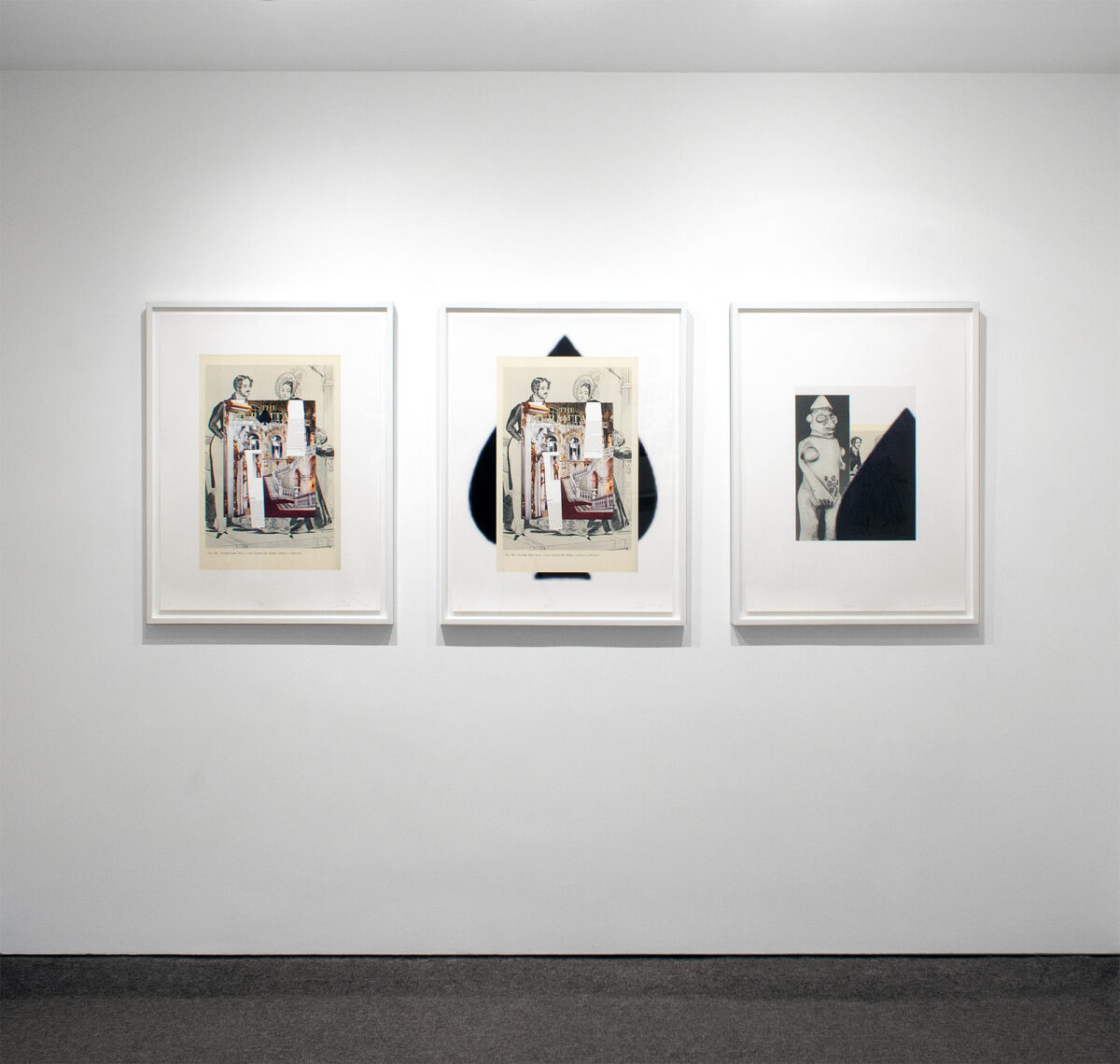
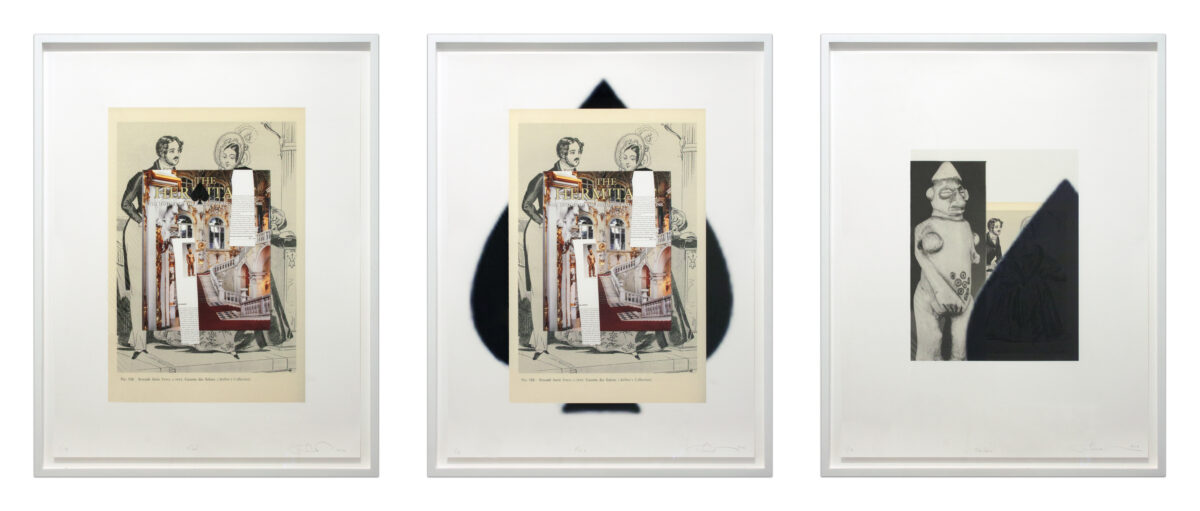
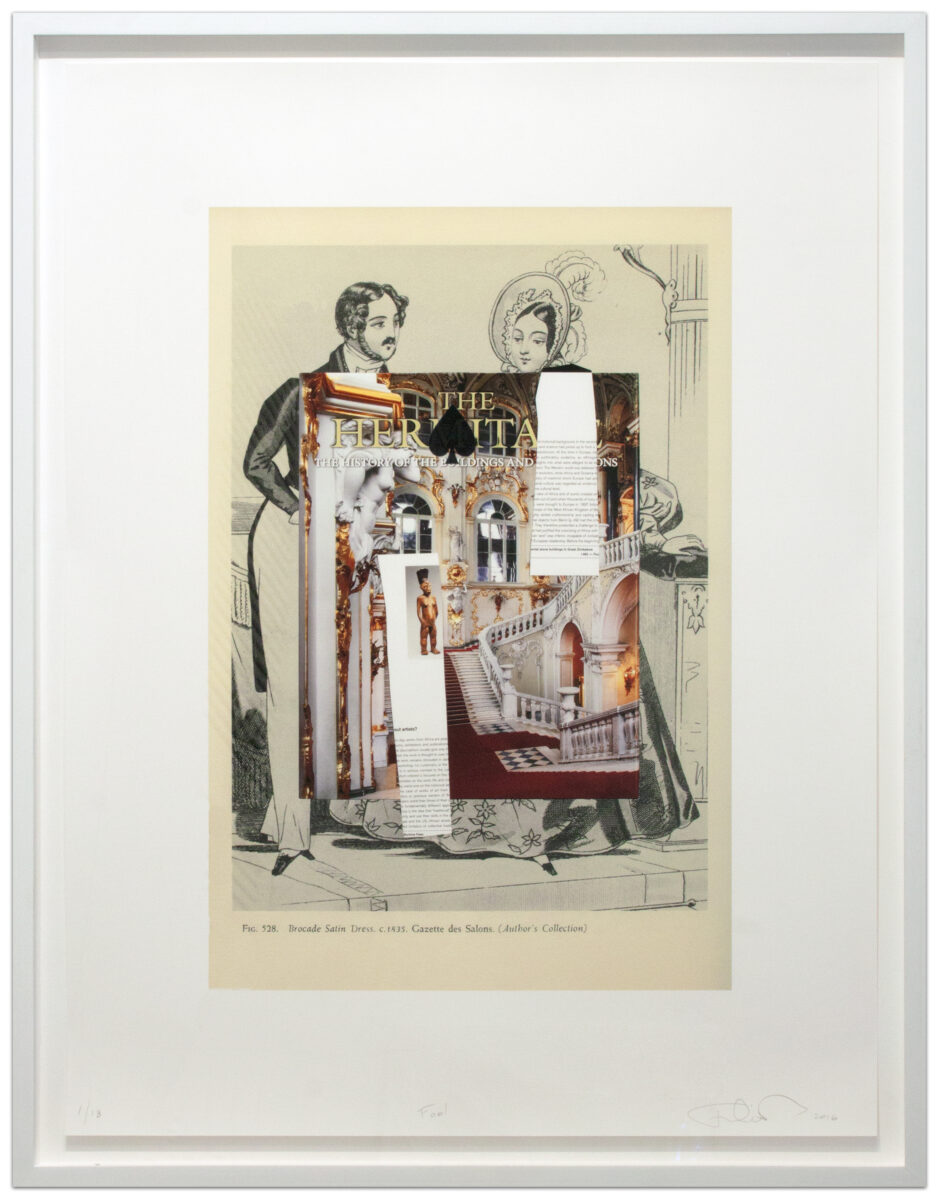
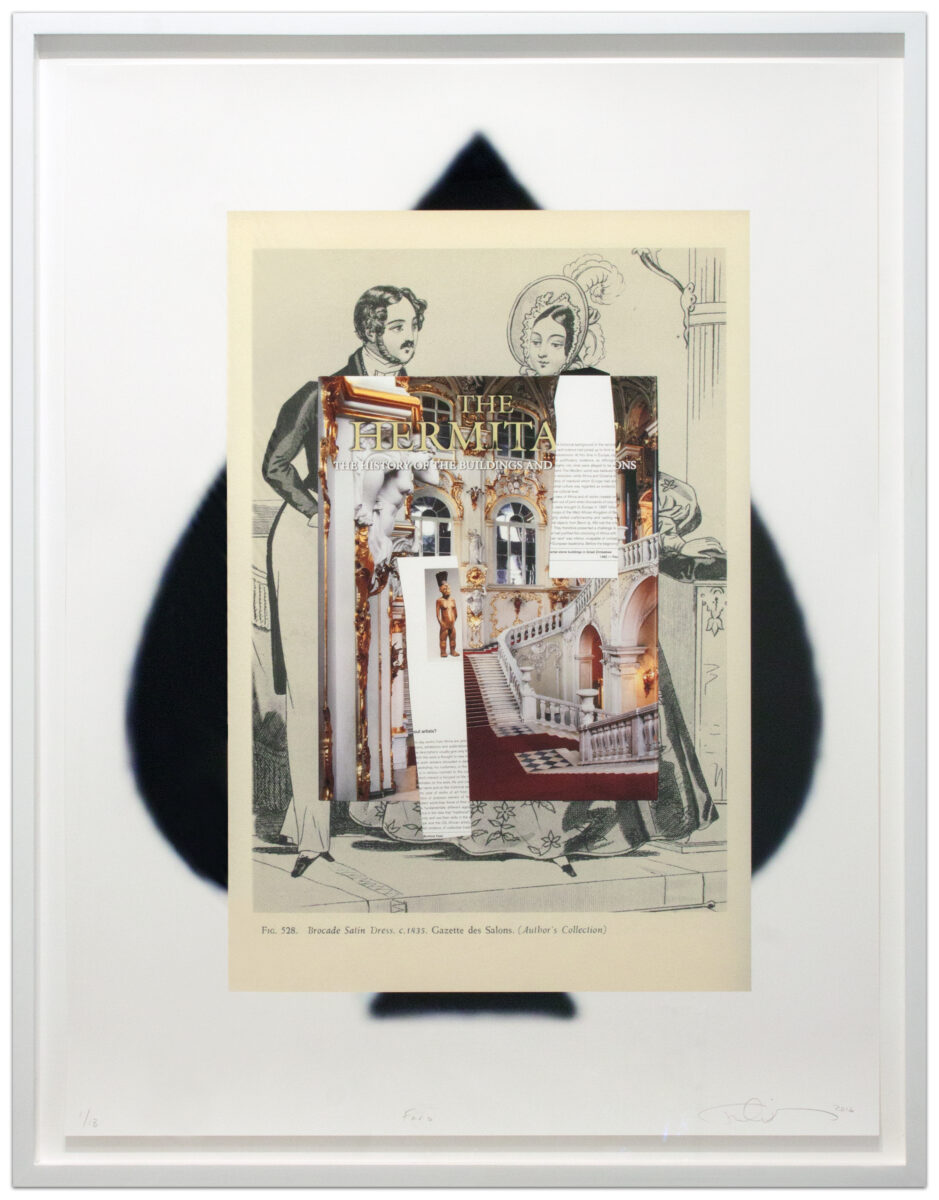
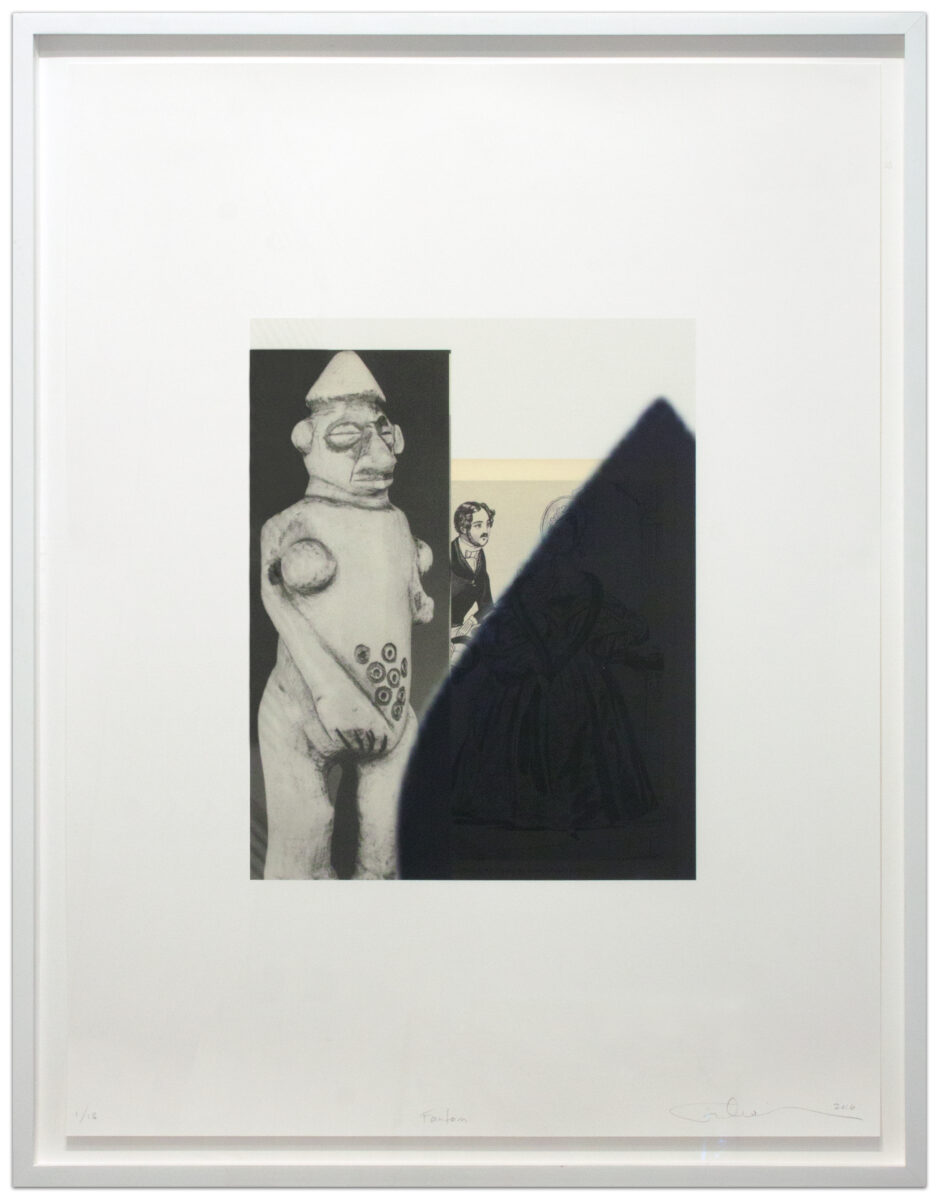
Image sizes vary for each
Paper size: 32 x 24 1/2 inches each (81.3 x 62.2 cm each)
Frame size: 34 3/4 x 27 3/8 inches each (88.3 x 69.5 cm each)
Edition of 18
Signed and dated lower right, numbered lower left and titled lower center in graphite on each sheet
(Inventory #30230)
Image sizes vary for each
Paper size: 32 x 24 1/2 inches each (81.3 x 62.2 cm each)
Frame size: 34 3/4 x 27 3/8 inches each (88.3 x 69.5 cm each)
Edition of 18
Signed and dated lower right, numbered lower left and titled lower center in graphite on each sheet
(Inventory #30230)
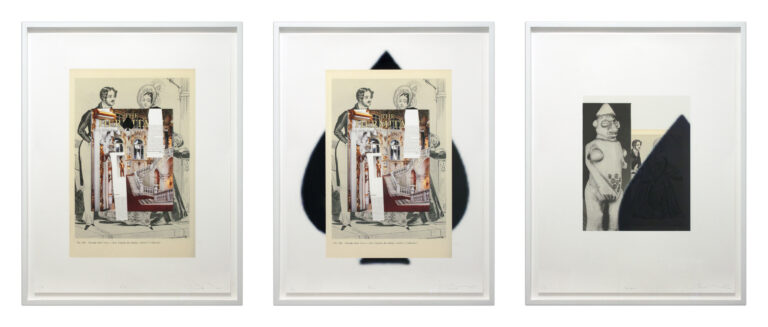
Fred Wilson came to wide acclaim in the early 1990’s when he created an iteration of his ongoing project of “rooms with a view”, titled, “Mining the Museum,” that used the Maryland Historical Society’s collection to encourage viewers to reconsider social and historical narratives. Since that time, Wilson has continued to explore the lesser-known, overlooked, sidelined and/or under-appreciated. His questions, examinations and deconstructions of standard museological practices have shed light on the importance, power and problem of context in understanding objects, situations and stories.
In response to Michael Steinberg’s offer for Wilson to create a suite of images relating to Alexander Pushkin’s famous story “The Queen of Spades,” Wilson wrote:
“When I was in Russia I found the Russians very aware of Pushkin’s African ancestry. A black friend of mine was constantly stopped and told he looked like Pushkin. However, they quite correctly believe Pushkin’s greatness is in his words. They feel the American obsession with race is our problem (I could go on about the Russian mentality, but I will leave it at that…). I was invited to St. Petersburg to give a lecture and plan a future museum project. While there I created the idea for a project about Pushkin’s African great-grandfather. It was to be proposed, jointly, to The Hermitage, the Pushkin Museum and the anthropology museum. Alas, it did not happen. However, visiting the Pushkin Museum inspired me greatly.”
A short summary of the story of “Queen of Spades” is as follows:
Hermann, an ethnic German, is an officer in the Imperial Russian Army. He watches other officers gamble, but never, himself, plays. One night, one officer tells a story about his grandmother, an elderly countess; Many years ago, in France, she lost a fortune at cards, and then won it back with the secret of the three winning cards. Hermann becomes obsessed with obtaining the secret.
The countess (who is now 87 years old) has a young ward, Lizavyeta Ivanovna. Hermann sends love letters to Lizavyeta and persuades her to let him into the house. There, Hermann accosts the countess, demanding the secret. She first tells him that story was a joke, but Hermann refuses to believe her. He repeats his demands, but she does not speak. He draws a pistol and threatens her. The old lady dies of fright. Hermann then flees to the apartment of Lizavyeta in the same building. There he confesses to have killed the countess by fright with his pistol. He defends himself by saying that the pistol was not loaded. He escapes from the house with the aid of Lizavyeta.
Hermann attends the funeral of the countess and is terrified to see the countess open her eyes in the coffin and look at him. Later that night, the ghost of thecountess appears. The ghost names the secret three cards (three, seven, ace), tells him he must play just once each night and then orders him to marry Lizavyeta. Hermann takes his entire savings to a salon, where wealthy men gamble for high stakes. On the first night, he bets it all on the three and wins. On the second night, he wins on the seven. On the third night, he bets on the ace — but when cards are shown, he finds he has bet on the Queen of Spades, rather than the ace, and loses everything. When the Queen appears to wink at him, he is astonished by her remarkable resemblance to the old countess, and flees in terror.
Wilson has been quoted as saying that ”I get everything that satisfies my soul from bringing together objects that are in the world, manipulating them, working with spatial arrangements, and having things presented in the way I want to see them.” The triptych, presented here at Krakow Witkin Gallery, does just that. It combines images from several sources. In two of the three pieces of the triptych, there are 4 elements: a black and white illustration of a woman wearing a brocade satin dress (c. 1835) while accompanied by a formally attired man, with a caption leading a viewer to guess this image has been taken from a non-fiction text about various types of clothing; a color image of a text about the interaction of Western and African culture, specifically the problematic ways in which Westerners thought of and took advantage of Africans and their culture; a color image of the cover of a publication about the Hermitage’s various buildings and collection(s); and an image of a spade. In these two pieces, the spade is the only change. In one the spade is rather small and is the “top” image. In the other, the space is much larger and is the “bottom” image (obscured by the other images). In the third element of the triptych, the spade is now even larger (not all of it fits within the confines of the picture plane), the color images are gone and a black and white image of a seemingly African object is the largest and most complete image within the picture plane. These juxtapositions provide myriad opportunities for questioning importance, legibility, lineage, memory and power. The incomplete and collage-like nature of the “Queen of Spades” serves, in a condensed form, to explore deeply confused, confusing and important topics of human interaction.
Fred Wilson has been the subject of many solo exhibitions, including the retrospective “Objects and Installations 1979-2000”, which was organized by the Center for Art and Visual Culture at the University of Maryland, Baltimore, and traveled to Saratoga Springs, Berkeley, Houston, Andover, Santa Monica and the Studio Museum in Harlem. Other solo presentations include “So Much Trouble in the World—Believe It or Not!” at the Hood Museum of Art, Dartmouth College (2005); “Works 2001–2011” at the Cleveland Museum of Art (2012); “Local Color” at The Studio Museum in Harlem (2013); “Black to the Powers of Ten and Wildfire Test Pit” at Allen Memorial Art Museum, Oberlin College, Ohio (2016); and “Fred Wilson” at the Neuberger Museum of Art, Purchase College, New York (2017). In 2003, Wilson represented the United States at the 50th Venice Biennale with the solo exhibition “Speak of Me as I Am”. His many awards include the prestigious John D. and Catherine T. MacArthur Foundation’s “Genius” Grant (1999); the Skowhegan Medal for Sculpture (2006); the Alain Locke Award from The Friends of African and African American Art at the Detroit Institute of Arts (2013); and a Lifetime Achievement Award, Howard University, Washington, D.C. (2017). He was honored by The Black Alumni of Pratt Institute during their 2017 Celebration of the Creative Spirit.
10 Newbury Street, Boston, Massachusetts 02116
617-262-4490 | info@krakowwitkingallery.com
The gallery is free and open to the public Tuesday – Saturday, 10am – 5:30pm